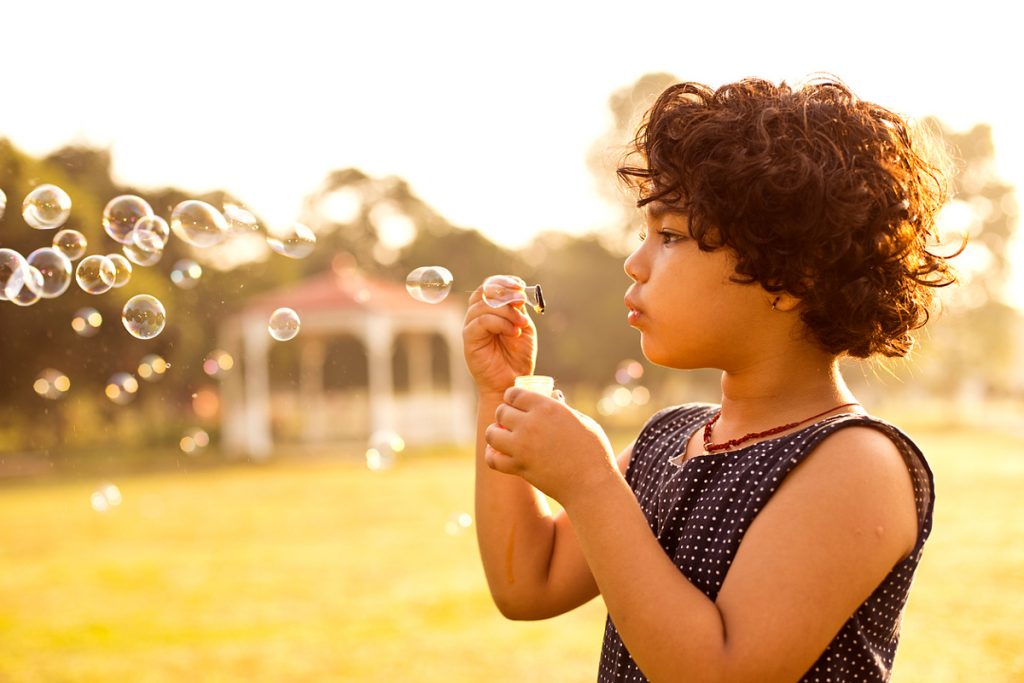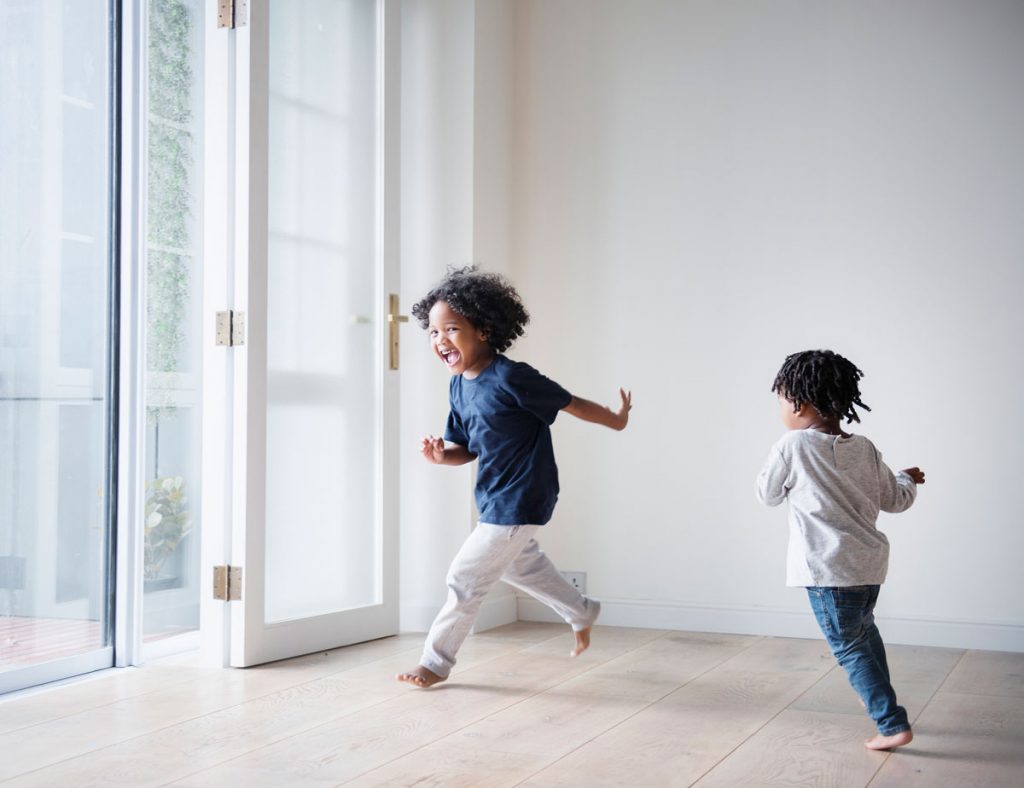Reading Time: 5 minutes read
Imagine a classic portrait. Your mind likely conjured an image of someone stiffly upright, sporting a respectable expression, and wearing their best clothes. This standard entered photography early and came from pre-existing customs in painting portraitures, where subjects needed to stand still while the painter did his thing.
It’s a practice we’ve had some difficulty shaking off. Even when it comes to children, we tend to revert to the tried and true—the straight-on angle, the upright posture—see any school photo for evidence.
The classic portrait definitely has its place, but modern photography has released us from having to capture that perfect shot the first time. Any parent with a camera or smartphone has the freedom to experiment with photographic techniques and playful ideas until they get the shot that perfectly embodies their little one.
Let’s shake things up! Here are six portrait ideas for children (that don’t require them to sit still forever).
1. Playful poses
If you want a straight-on portrait, take that straight-on portrait. There’s nothing wrong with that. Experiment with new poses, though, and you may find a straight-on style that more naturally evokes your child’s personality.
In the afternoon, have your child pose with a favorite toy or sports equipment. Then let them pose with it, allowing their energy elicit that sense of play. If they have the giggles, just get in there and take the shot. No need to say, “Smile!”—you’ll still get a great shot of missing front teeth.
If it’s later in the evening, have them cuddle with a blanket or stuffed animal they love. Again, they don’t have to smile. The look of soft dreaminess in their eyes will create a charming composition.
2. Experiment with portait angles
Want to break free of the straight-on approach? Try high and low angles. High angles make your child appear diminutive in the frame. It’s perfect for those small, childlike moments such as smelling a flower, observing insects, or building with blocks.
A low angle gives your child a larger-than-life vibe. It fills the frame with your child’s playful side and shows the world how they view themselves within their imaginary worlds. This angle was made for sports, dress up, and adventure days out in nature.
Consider the side profile, too—it’s especially effective with children. A child’s profile is soft and lacks the harder edges of an adult’s, making for a striking subject.

3. Get artsy
Give your child the freedom to craft their own portrait. Let them design a backdrop out of a refrigerator, magnets, and their one-of-a-kind art. They can surround themselves with stuffed animals or LEGO creations. Or pick favorite playground equipment to fashion a frame within a frame. Take the artsiness to the next level with some post-process editing.
At different ages, children will have different ideas of what makes the best portrait. The goal is to let their imagination bring out their personality in a way that will be unique to this moment in their lives.
4. The action portrait
Another portrait idea for children is to incorporate motion in your pictures. A delightful place to start is outdoors. Swings and slides bring out natural smiles, and if your child is gymnast, monkey bars provide a topsy-turvy viewpoint.
Have them run with a football or kick a soccer ball. Shots moving toward the camera offer a sense of athleticism. Catch them from the side and the motion blur will add a dynamic energy to the composition.

The best part? You get portraits that feel alive, and your child gets to actively engage in the process.
5. Candid camera
Instead of preparing a formal portrait situation, have your camera ready for those candid moments. It may be that time you catch your child reading while her finger gently keeps her place. It may be when he grabs grandpa’s nose. Or it could be the astonished look on their faces when the papier-mâché volcano gets real messy, real fast.
There’s no way to know it until you see, but when you see it, you’ll know it.
6. Play with the light
Let the light guide you to a great opportunity. The golden hour will paint the portrait in warm tones. Light shining through a window can offer a reflective image as your child stares into the distance. And a silhouette will naturally limit the details, allowing your child’s body language to exhibit how they feel in that moment in time.
What to do with your favorite child portraits?
We no longer live in an era where a portrait costs a fortune and has to be painstakingly painted by hand. Thanks to digital photography and user-friendly programs, creative possibilities are nearly limitless for anyone with a computer and Internet connection.
This also means we have more freedom in how we want to collect and display portraits. You could create a collage of your favorite shots. Or craft a calendar to remember last year’s special days while preparing this year’s. But one of our favorites has to be custom-made cards. A child’s portrait is the perfect way to celebrate birthdays, reach out to pen pals, or let a loved one know you’re thinking of them. Custom cards connect the recipient to you and your family in a special and intimate way.
Similarly, your child’s portrait can reconnect you with those precious, fleeting moments of childhood years later. By expanding our repertoire of portrait approaches and techniques, we can engender these images with a sense of who they are in this moment in time.








